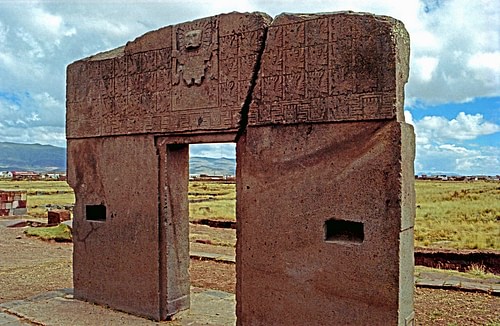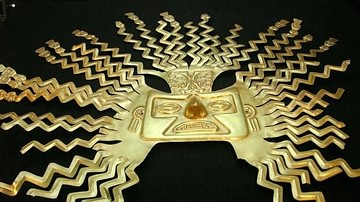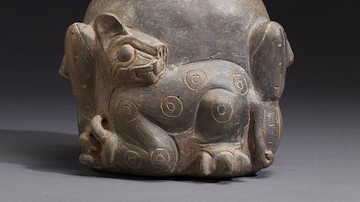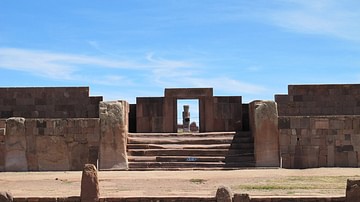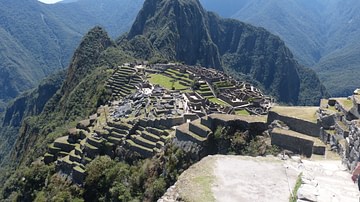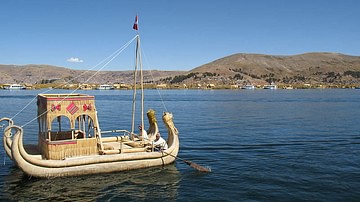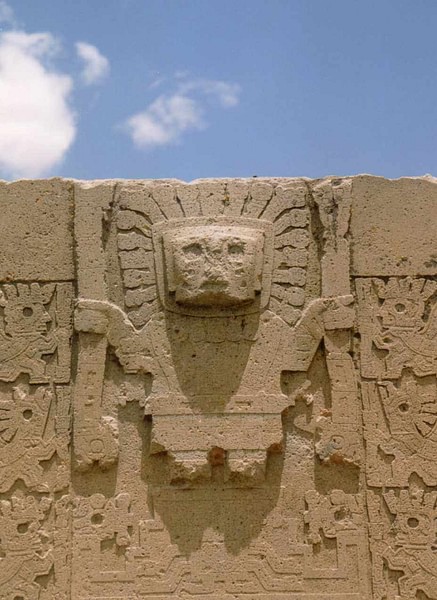
Viracocha was the supreme god of the Incas. He is also known as Huiracocha, Wiraqoca and Wiro Qocha. Considered the creator god he was the father of all other Inca gods and it was he who formed the earth, heavens, sun, moon and all living beings. When he finished his work he was believed to have travelled far and wide teaching humanity and bringing the civilised arts before he headed west across the Pacific, never to be seen again but promising one day to return. In his absence lesser deities were assigned the duty of looking after the interests of the human race but Viracocha was, nevertheless, always watching from afar the progress of his children.
Alternative Names
As the supreme pan-Andean creator god, omnipresent Viracocha was most often referred to by the Inca using descriptions of his various functions rather than his more general name which may signify lake, foam, or sea-fat. These other names, perhaps used because the god's real name was too sacred to be spoken, included Ilya (light), Ticci (beginning), and Wiraqoca Pacayacaciq (instructor).
The Creator God
It was believed that human beings were actually Viracocha's second attempt at living creatures as he first created a race of giants from stone in the age of darkness. However, these giants proved unruly and it became necessary for Viracocha to punish them by sending a great flood. In the legend all these giants except two then returned to their original stone form and several could still be seen in much later times standing imposingly at sites such as Tiahuanaco (also known as Tiwanaku) and Pukará.
Then Viracocha created men and women but this time he used clay. He also gave them such gifts as clothes, language, agriculture and the arts and then created all animals. Even more useful was Viracocha's decision to create the sun, moon and stars and so bring light to the world. These heavenly bodies were created from islands in Lake Titicaca. Finished, and no doubt highly satisfied with his labours, Viracocha then set off to spread his civilizing knowledge around the world and for this he dressed as a beggar and assumed such names as Con Ticci Viracocha (also spelt Kon-Tiki), Atun-Viracocha and Contiti Viracocha Pachayachachic. He was assissted on his travels by two sons or brothers called Imaymana Viracocha and Tocapo Viracocha. The god was not always well received despite the knowledge he imparted, sometimes even suffering stones thrown at him. Ending up at Manta (in Ecuador), Viracocha then walked across the waters of the Pacific (in some versions he sails a raft) heading into the west but promising to return one day to the Inca and the site of his greatest works.
Worship
Viracocha was actually worshipped by the pre-Inca of Peru before being incorporated into the Inca pantheon. In Inca mythology the god gave a headdress and battle-axe to the first Inca ruler Manco Capac and promised that the Inca would conquer all before them. The god's name was also assumed by the king known as Viracocha Inca (died 1438 CE) and this may also be the time when the god was formally added to the family of Inca gods. Worshipped at the Inca capital of Cuzco, Viracocha also had temples and statues dedicated to him at Caha and Urcos and sacrifices of humans (including children) and, quite often, llamas, were made to the god on important ceremonial occasions. As other Inca gods were more important for the daily life of common people, Viracocha was principally worshipped by the nobility, and then usually in times of political crisis.
Viracocha in Art
In art Viracocha is often depicted as an old bearded man wearing a long robe and supported by a staff. One of his earliest representations may be the weeping statue at the ruins of Tiwanaku, close to Lake Titicaca, the traditional Inca site where all things were first created. Here, sculpted on the lintel of a massive gateway, the god holds thunderbolts in each hand and wears a crown with rays of the sun whilst his tears represent the rain. Another famous sculpture of the god was the gold three-quarter size statue at Cuzco which the Spanish described as being of a white-skinned bearded male wearing a long robe.
